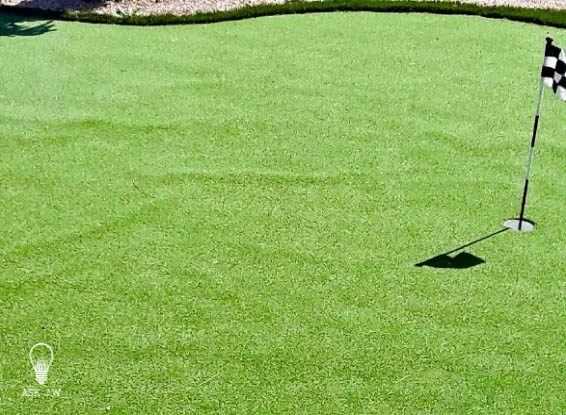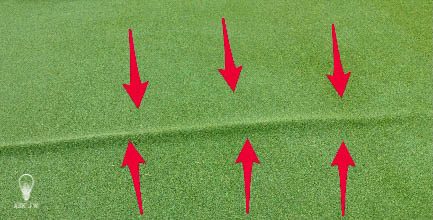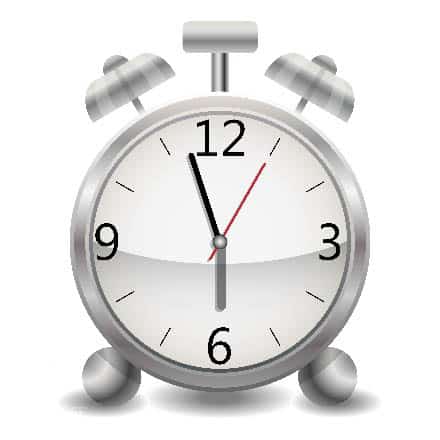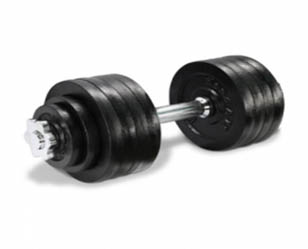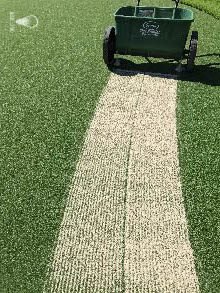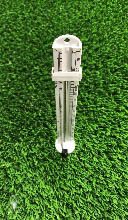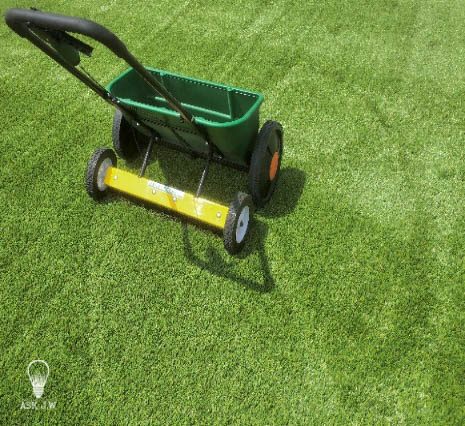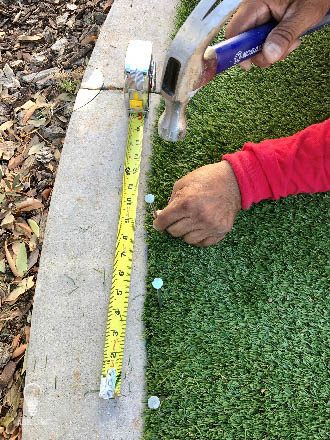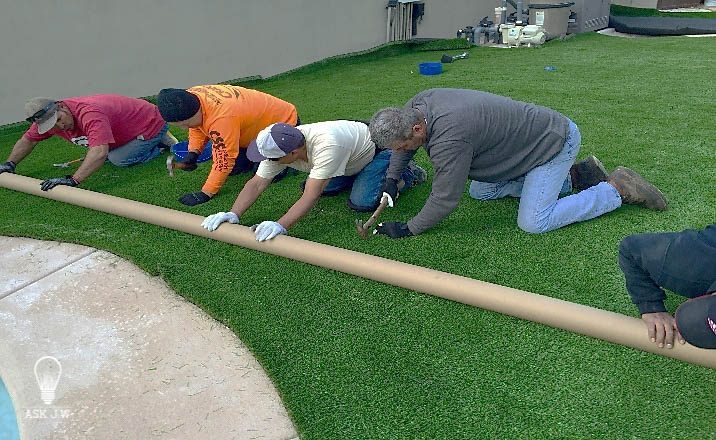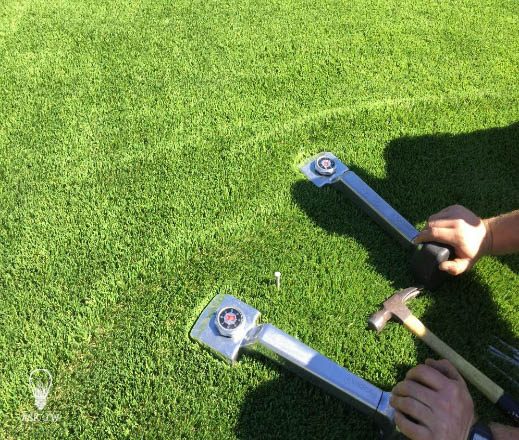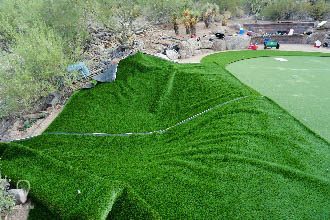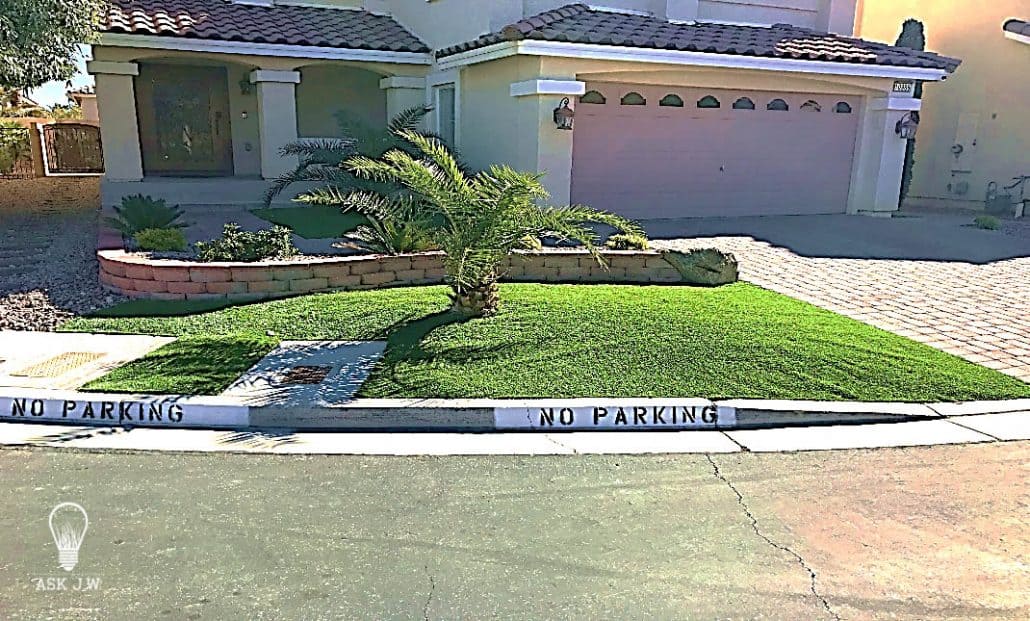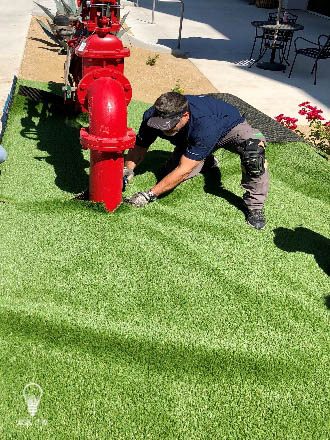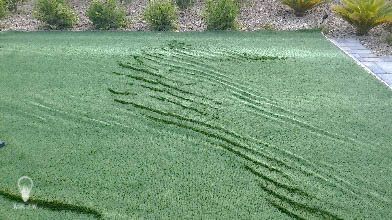It’s happening again. Every year about this time I get bombarded with calls regarding wrinkles in synthetic turf. I have received calls from contractors, homeowners, even sports field managers asking the never ending question…. “Why am I getting wrinkles in my synthetic turf?”
“If you are wanting to perfect your installations in every seasons climate change, then you and your team must seek knowledge, techniques, and patience in combating wrinkles in all synthetic turf products.
JW
This month ASK JW will explain the causes behind synthetic turf wrinkles.
The cause behind synthetic turf wrinkles … JW
- Inexperienced Installers
- Hot temperature changes
- Time of day
- Improper Ballast
- Infill Placement
- Improper securing of turf
- Slopes, Mounds, Drains & Objects
- Poorly manufactured synthetic turf
Inexperienced Installers
Inexperienced Installers that do not understand, where, when, how and why wrinkles occur, will create unhappy customers. Natural sod does not wrinkle when it gets hot so shouldn’t synthetic turf. It is advantageous for your business to educate and teach your frontline how to prevent and remove wrinkles in the completion of every installation.
Hot Temperature Changes
Let’s face it, synthetic turf can and will wrinkle. Adding extreme heat and direct sunlight can make it impossible to prevent and remove wrinkles.
Time of Day
If you have an installation that will require multiple days to complete on very hot days, I recommend scheduling the placement of the Infill to be early in the morning or early evening. Thermal expansion/contraction occurs when temperatures rise and lower. When the temperatures are cooler the wrinkles are less to appear. When the temperature rises, the heat transfers within the turf and causes the backing to swell and lift from the ground. This ultimately causes wrinkles.
Improper Ballast (Weighing Down the Turf)
Hot climates require that there be NO CHEATING on placing Infill into your synthetic turf system. I have seen contractors deliver 10% of the Infill that is actually required to Ballast the turf system. If the manufacture requires 1 1/2 pound of Infill per square foot for the product that you are installing… This means it is YOUR responsibility to place what is required. Placing Infill has many benefits to your turf system, not just keeping the fibers upright, but assisting in ballast which is the #1 prevention of wrinkling.
Infill Placement
Now that you understand the amounts required to ballast your chosen turf, you must place the infill when the turf is secured tightly and contoured to your compacted surface. I recommend placing infill in the early mornings to stay ahead of the heat before it wants to create upcoming wrinkles. I have been on large projects that the turf was installed early in the morning and when noon came it was too hot to place infill due to the turf having too many wrinkles. Once you start placing Infill into wrinkled turf, the chances for the Infill to weigh down the wrinkle while in its expanding/contracting mode is very slim. I recommend waiting till the temperatures lower and place the infill when there is no visible wrinkles.
Improper Securing of Turf
You must lightly stretch and secure synthetic turf to prevent wrinkles. If you allow synthetic turf to be secured without lightly stretching, when temperatures arise you may receive wrinkles. Over stretching of the turf will not keep wrinkles at bay, in fact over stretching turf is not good for the backing and reduces its longevity.
Slopes, Mounds, Drains & Objects
Expect there to be wrinkles when you are installing turf on and around slopes, mounds, sunken drains and protruding objects. You may have to cut reliefs, stretch out the wrinkles, cut the excess out and seam back together to remove wrinkles in these types of installations.
Poorly Manufactured Synthetic Turf
If you are purchasing inferior synthetic turf, you will definitely get what you pay for. Synthetic Grass Warehouse is your only place to shop for quality synthetic turf.
JW Turf Wrinkle Facts
If it is too hot out… it may wrinkle.
If the turf isn’t lightly stretched and secure … it may wrinkle.
If you don’t place the correct amount of Infill… It may wrinkle.
If you place Infill unevenly… It may wrinkle.
If you purchase turf of low quality… It may wrinkle.
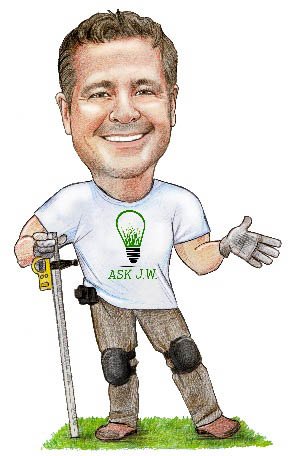
“Over two decades in this Industry, I have learned to combat wrinkles in synthetic turf. To be the best in anything that you do in life you will need to overcome obstacles to get there. When you are facing wrinkles in synthetic turf, you have no choice but to learn how to remove them… I say get excited for the challenge and become the best turf wrinkle remover in the Industry.”
JW
For more information regarding Wrinkles, please contact J.W at 888.846.3598 or email AskJW@SGWcorp.com


